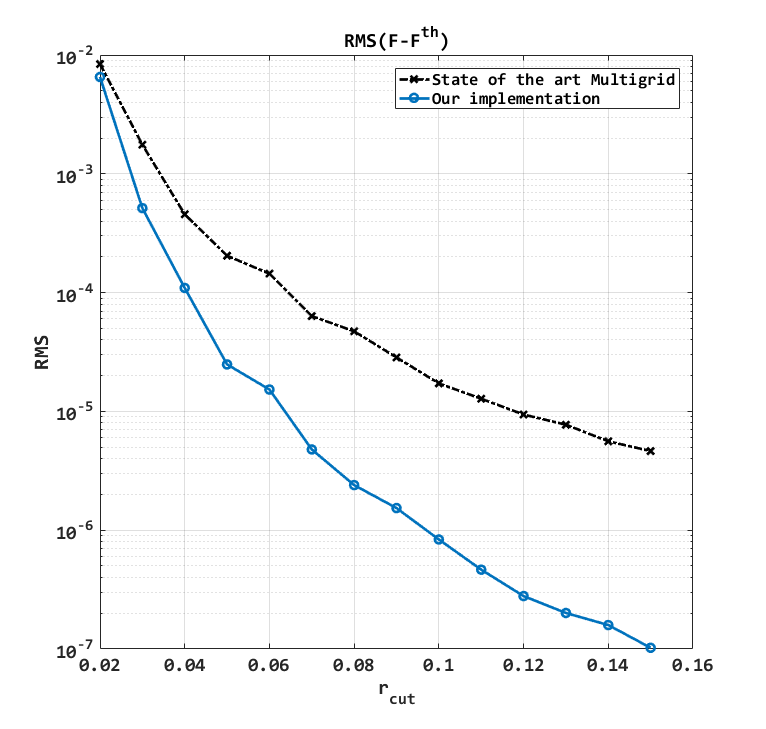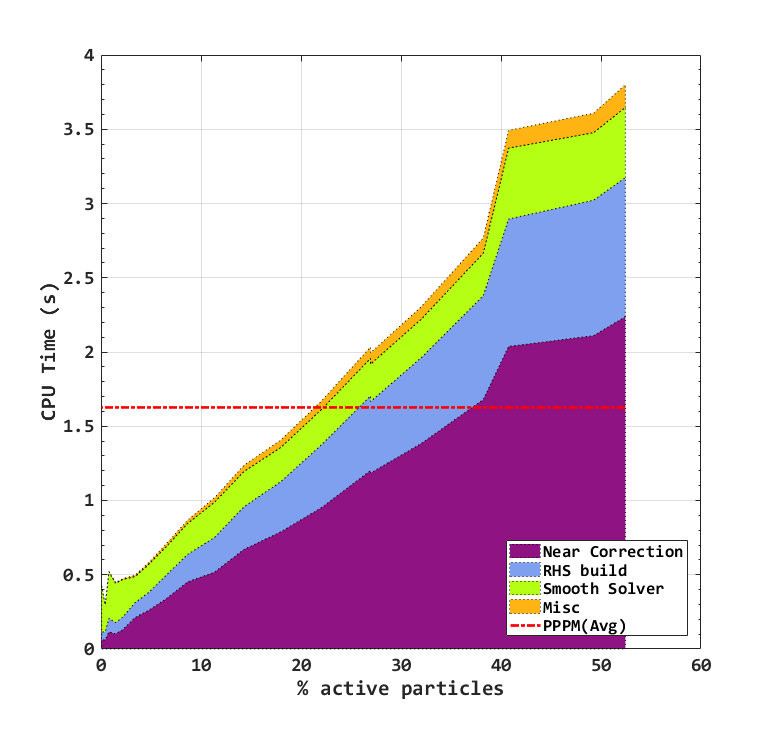Section:
New Results
Incremental methods for long range interactions
Participants :
Semeho Edorh, Stephane Redon.
Adaptively Restrained Particles Simulations (ARPS) were recently proposed with the purpose of speeding up
molecular simulations. The main idea is to modify the Hamiltonian such that the kinetic energy is set to zero for low velocities, which allows to save computational time since particles do not move and forces need
not be updated.
We continued our work on developing an extension of ARPS to electrostatic simulations.
We have decided to compute the electrostatic contribution by using Multigrid method.
This choice have been made because of its behavior and its good scalability. In systems containing point charges, Multigrid can't be applied directly because of the discontinuous distribution created by these charges. To overcome this problem, one can replace this distribution by a smooth charge distribution. This charge distribution will be the source term of a Poisson equation which will be solved by Multigrid method.
By doing so we retrieve an approximative electrostatic contribution which can be corrected by a near field correction.
Concretely each charge will be smeared by a smooth density function.This function is chosen with a compact support. The accuracy of the method is related to the degree of smoothness and the size of the support of the chosen function Fig(15).
The bottleneck of this method is often the time spent building the smooth charge distribution. To overcome this issue, We've introduced an interpolation scheme in the near field correction. This leads to a significant reduction of the support required to achieve a specified accuracy. The time spent building the smooth charge distribution is also reduced. Conversely the near correction is slowed down. Nevertheless, the introduction of the interpolation scheme speeds up the method in most of cases Fig(16).
Finally we modified our algorithm to take advantage of ARPS dynamics. This leads to a speed up related to the amount of restrained particles. According to our benchmarks our method can challenge Particle Particle Particle Mesh(PPPM), the traditional fast method to compute electrostatics Fig(17). Our algorithm is implemented in LAMMPS.
Figure
15. Accuracy in forces for the state of the art multigrid and our implementation :
125000 charged particles randomly distributed in a cubic box. represents the width of the chosen function.
|
|
Figure
16. Comparison in terms of CPU time between the state of the art multigrid and our implementation :
125000 charged particles randomly distributed in a cubic box. represents the width of the chosen function.
|
|
Figure
17. Comparison in terms of CPU time between PPPM and our implementation for a fixed accuracy :
64000 charged particles randomly distributed in a cubic box. Some particles are in restrained dynamics. Colored areas show the associated contribution of each part of our multigrid algorithm. Red dash-dot line represents CPU Time of Particle Particle Particle Mesh needed for this system.
|
|




